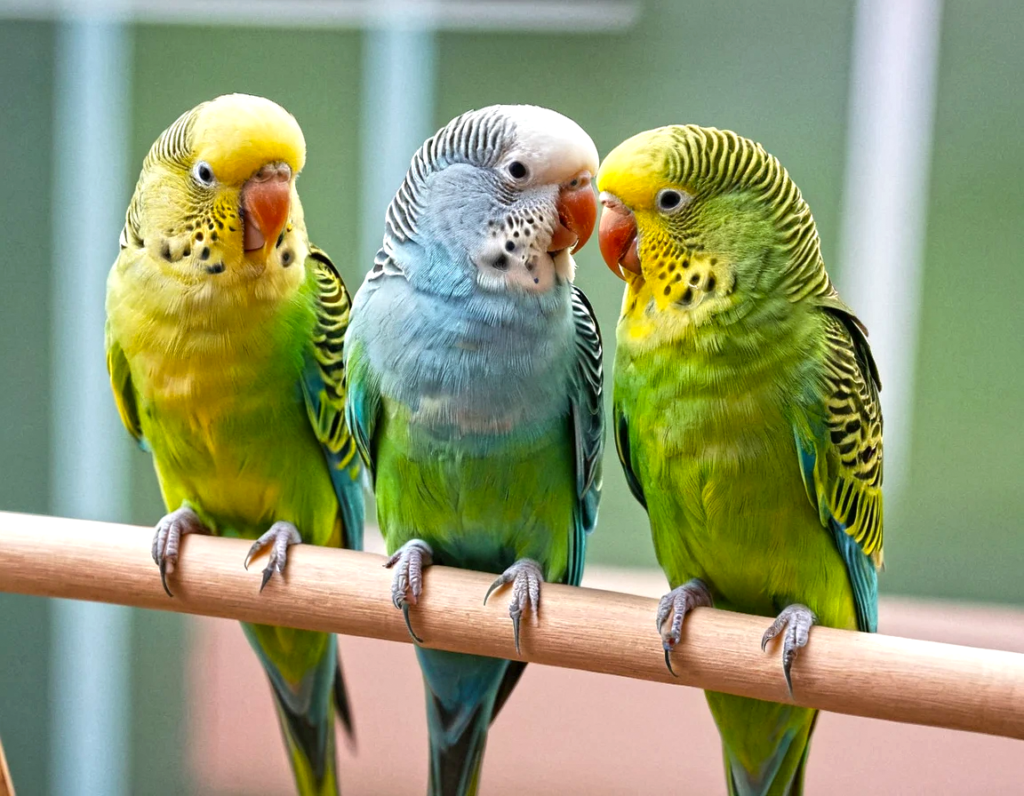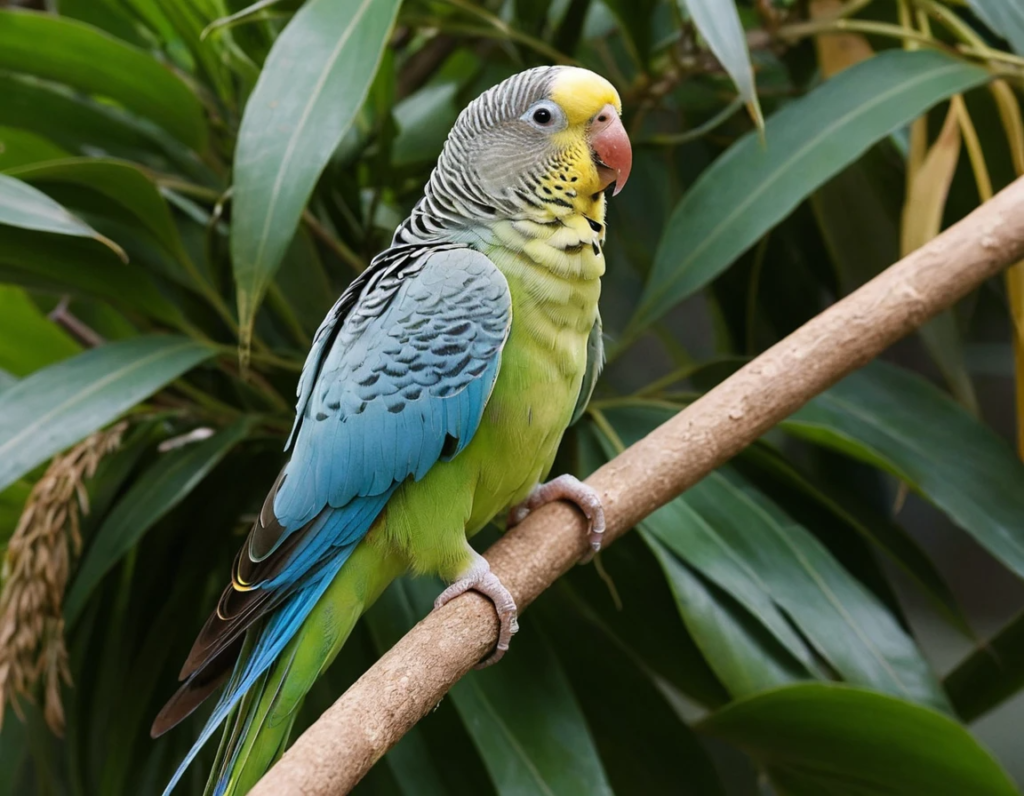
How to Trim a Parakeet’s Nails at Home: A Simple Guide
If you’ve ever held your parakeet and thought, “Wow, those little claws feel like tiny daggers,” then it’s probably time for some parakeet nail trimming. Keeping your bird’s nails in check is important for their comfort and yours—unless, of course, you enjoy looking like you wrestled a tiny velociraptor.
Why Trim Your Parakeet’s Nails?
Parakeets don’t have a built-in nail salon, and in captivity, their nails can grow too long without natural wear. Overgrown nails can make it hard for them to perch properly and can even cause injury. So, unless you want your bird walking around with fancy but impractical talons, regular parakeet nail trimming is a must!
Signs That Your Parakeet Needs a Nail Trim
Not sure if it’s time for a trim? Here are some clues:
- Their nails are curving too much.
- They struggle to grip their perch.
- They get stuck in fabric (like your sweater—ouch!).
- They leave tiny scratches on you with every landing.
If any of these sound familiar, it’s time to grab your clippers.
What You’ll Need
Before you start, gather these supplies:
- Bird nail clippers (or small human nail clippers if needed)
- A towel (for gently securing your bird)
- Styptic powder or cornstarch (for accidental bleeding—nobody wants that!)
- Patience and a calm attitude (because let’s be honest, your parakeet won’t love this idea)
Step-by-Step Guide to Trimming Your Parakeet’s Nails
- Pick a quiet, well-lit spot. A calm environment helps reduce stress.
- Wrap your parakeet in a soft towel. This keeps them still and prevents unnecessary flapping.
- Identify the quick. The pinkish area inside the nail is where blood vessels are—avoid cutting too close!
- Trim just the tip. It’s better to cut a little at a time than too much at once.
- Use styptic powder if needed. Accidents happen, and this stops any bleeding quickly.
- Reward your bird. A treat and some sweet talk will help mend your parakeet’s temporary grudge.
Keeping Nails Short Naturally
If trimming sounds like an extreme sport, try these tips to keep your bird’s nails naturally short:
- Use rough perches. Sand-covered or natural wooden perches help file nails down.
- Encourage climbing. The more they move, the less frequent parakeet nail trimming is needed.
Final Thoughts
Parakeet nail trimming doesn’t have to be a dramatic event. With the right tools, a steady hand, and maybe a little bribery (treats work wonders), you can keep your parakeet’s nails at a comfortable length. And don’t worry if they give you the side-eye afterward—they’ll forgive you… eventually!
Now go on, be the responsible bird parent your parakeet thinks you are (even if they secretly plot revenge for the next 10 minutes). Happy trimming!
Best Tools for Parakeet Nail Trimming:
If you’ve ever had your parakeet perch on your finger and felt like you were being gently stabbed by tiny needles, it’s time for some parakeet nail trimming. But before you jump in with the nearest pair of scissors (please don’t do that), let’s talk about the best tools for the job.
Why the Right Tools Matter
Using the wrong tools for parakeet nail trimming can result in uneven cuts, stress for your bird, and—worst-case scenario—accidental injury. The right tools make the process smoother, safer, and a lot less like a battle with a feathery ninja.
Must-Have Tools for Trimming Your Parakeet’s Nails
Here are the best tools to keep your bird’s nails in check:
1. Bird-Specific Nail Clippers
- These are designed specifically for small birds like parakeets.
- They have a precise cutting edge to avoid crushing the nail.
- Less risk of slipping compared to regular nail clippers.
2. Human Nail Clippers (In a Pinch)
- If you don’t have bird clippers, a small pair of human nail clippers can work.
- Make sure they are sharp to prevent splintering the nail.
- Just don’t mix them up with your own clippers—unless you want to share beauty tools with your bird.
3. Styptic Powder or Cornstarch
- In case you accidentally cut too close to the quick, styptic powder stops bleeding quickly.
- Cornstarch can work too if you’re in a bind (and no, it won’t turn your bird into a tiny breaded snack).
4. A Small Nail File
- Helps smooth out any rough edges after trimming.
- Some birds may not need it, but if you want to go the extra mile, your parakeet will appreciate the spa treatment.
5. A Soft Towel
- Wrapping your bird in a towel keeps them secure and prevents unnecessary flapping.
- It also reduces the chance of getting pecked by an unimpressed parakeet.
Bonus: Natural Ways to Keep Nails Short
If you’d rather let nature handle some of the work, try these:
- Rough perches: Sand-covered or natural wooden perches help wear down nails.
- Climbing toys: More activity means less frequent parakeet nail trimming.
Final Thoughts
Using the right tools makes parakeet nail trimming much easier and safer. With a good pair of clippers, some styptic powder, and a little patience, you can keep your parakeet’s nails at a comfortable length—without making them look at you like you just betrayed their trust forever.
Now go forth and trim with confidence! And if your parakeet holds a grudge, just bribe them with a treat—they’re pretty easy to win over.
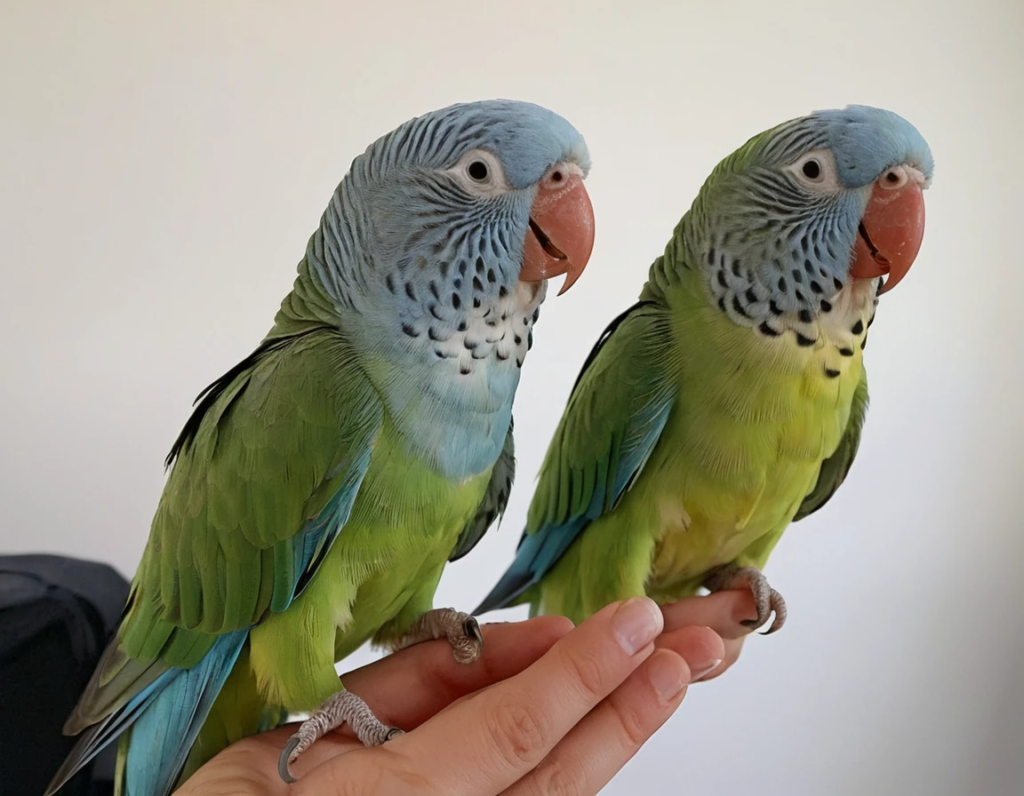
How Often Should You Trim a Parakeet’s Nails?
If your parakeet’s nails feel like tiny daggers every time they land on you, you might be wondering, “How often should I be doing parakeet nail trimming?” The short answer: It depends! But don’t worry—I’ll break it down so you and your feathered friend can avoid unnecessary stress (and scratches!).
How Fast Do Parakeet Nails Grow?
Parakeet nails grow at different rates depending on age, diet, and activity level. Just like people, some birds have faster-growing nails, while others naturally wear them down by climbing and perching on rough surfaces.
General Rule: Trim Every 4 to 6 Weeks
For most parakeets, nail trimming every 4 to 6 weeks is a good routine. However, some birds may need it more often if:
- Their nails grow faster than usual.
- They don’t have rough perches to naturally wear them down.
- They keep getting stuck in fabric (like your favorite sweater—ouch!).
If your parakeet’s nails still look fine after six weeks, you can wait longer before trimming again.
Signs That It’s Time for a Trim
Not sure when to grab the clippers? Here are some signs:
- Nails are curving too much and making perching difficult.
- Your parakeet slips or loses grip on their perch.
- Scratches on your skin every time they land on you.
- Getting stuck in cage bars or toys.
If any of these sound familiar, it’s time for a parakeet nail trimming session!
Can You Trim Too Often?
Yes! Trimming too often can cut into the quick (the sensitive, blood-filled part of the nail), causing pain and bleeding. That’s why it’s best to trim only when needed. If you’re unsure, a light file instead of a full trim can help maintain the nails between sessions.
How to Reduce the Need for Frequent Trimming
Want to space out parakeet nail trimming sessions? Try these:
- Use rough-textured perches (like sand-covered or natural wood perches) to help wear nails down.
- Encourage climbing and activity—more movement naturally helps control nail length.
- Check nails regularly so they don’t get out of hand (literally).
Final Thoughts
For most parakeets, nail trimming every 4 to 6 weeks is a good rule of thumb (or claw). Keep an eye on their nails, provide the right perches, and only trim when necessary. And if your parakeet acts offended after a trim, don’t worry—just bribe them with a treat, and they’ll forgive you soon enough!
Signs That a Parakeet’s Nails Are Too Long:
Your parakeet might be tiny, but their nails can pack a surprising punch—especially when they turn into little needle-like weapons. If you’ve ever wondered whether it’s time for parakeet nail trimming, here are some telltale signs that your bird’s nails are getting too long.
Nails Are Curving Too Much
A little curve is normal, but if your parakeet’s nails look like they belong on a wizard casting spells, they’re probably too long. Overgrown nails can make perching uncomfortable and even lead to injuries.
Difficulty Perching
Does your parakeet seem wobbly on their favorite perch? Long nails can make it hard for them to grip properly, causing slips and awkward balancing acts that make them look like a tiny, confused acrobat.
Getting Stuck in Fabric
If your bird keeps getting their nails caught in your clothes, curtains, or cage bars, it’s a sign they need parakeet nail trimming. Unless you want to play “untangle the bird” every day, it’s best to trim them down.
Scratches on You
Love having your parakeet perch on your finger but not a fan of the tiny battle scars? If your hand looks like you’ve been in a fight with a cactus, it’s time to trim those nails.
Nails Touching the Leg
When your parakeet is standing normally, their nails shouldn’t press against their legs. If they do, it’s a surefire sign that they’ve gotten too long and need a trim ASAP.
Less Activity or Restlessness
Long nails can make it uncomfortable for your bird to climb, play, or even walk around normally. If they’re avoiding their usual activities, it might be because those claws are getting in the way.
When to Do a Parakeet Nail Trimming
If you notice any of these signs, grab a good pair of bird clippers and trim the nails carefully. If you’re unsure or nervous about trimming them yourself, a vet or pet groomer can help.
How to Prevent Overgrown Nails
To reduce the need for frequent trims, try these:
- Use rough-textured perches (like sand-covered or natural wood perches) to help wear down nails.
- Encourage climbing and movement—active birds naturally keep their nails shorter.
- Check their nails regularly so you can trim them before they get too long.
Final Thoughts
If your parakeet’s nails are causing perching problems, getting caught in fabric, or leaving scratches on you, it’s probably time for a parakeet nail trimming session. Keeping their nails at a healthy length will help them stay comfortable, active, and—most importantly—less likely to treat you like their personal scratching post!
So, grab those clippers, offer some treats, and get trimming. Your parakeet might give you the side-eye for a while, but they’ll thank you later (probably).
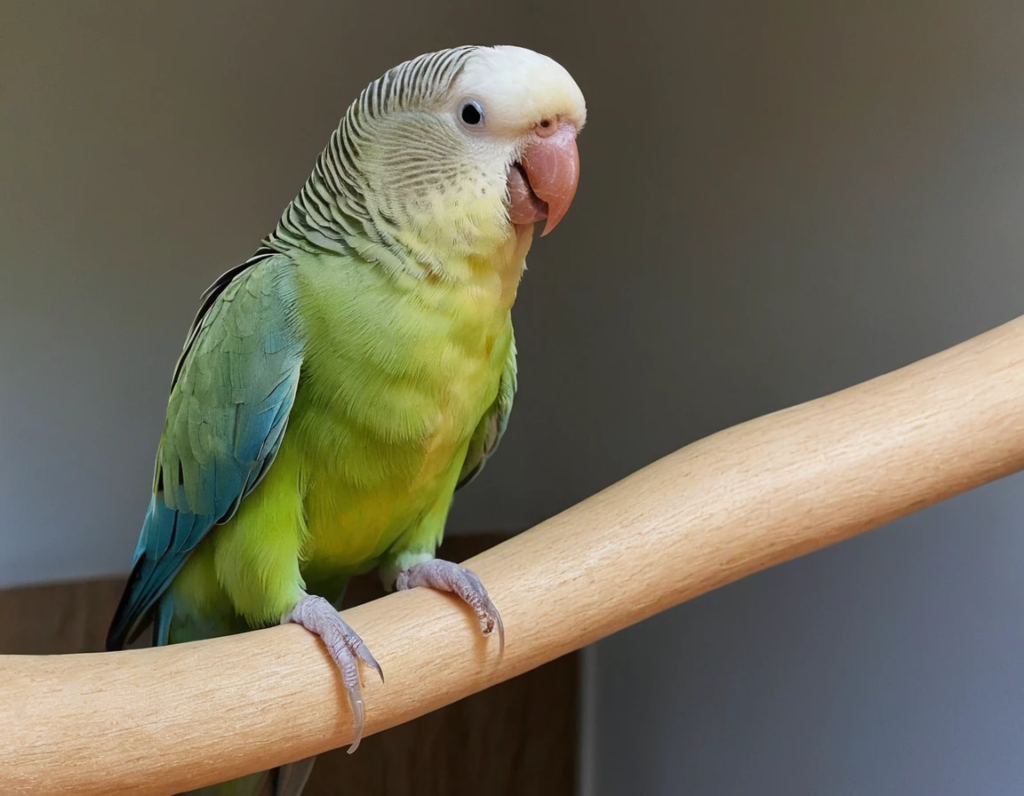
Safe Ways to Trim a Parakeet’s Nails Without Hurting Them
Trimming your parakeet’s nails can feel like performing delicate surgery on a tiny, feathery diva. But don’t worry! With the right approach, you can make parakeet nail trimming safe and stress-free—for both of you. Here’s how to do it without turning your bird into an angry little fluff ball.
Step 1: Gather Your Supplies
Before you start, make sure you have everything you need:
- Bird nail clippers (or small human nail clippers)
- A soft towel (for gentle restraint)
- Styptic powder or cornstarch (in case of bleeding)
- A well-lit area (so you can see what you’re doing)
- Patience (because your parakeet will probably have opinions about this)
Step 2: Create a Calm Environment
Parakeets don’t love surprises—especially ones that involve their feet. Choose a quiet, well-lit space and speak to your bird in a soothing voice. If they think something terrible is happening, they’ll let you know (loudly).
Step 3: Gently Secure Your Bird
Use a soft towel to wrap your parakeet like a tiny burrito, leaving their head and feet exposed. This helps keep them still while preventing flapping and escape attempts. Remember, you’re going for gentle restraint, not an unbreakable parakeet fortress.
Step 4: Identify the Quick
Look closely at your parakeet’s nails. The pinkish area inside the nail (the quick) contains blood vessels. Avoid cutting too close to this! If you accidentally cut the quick, it will bleed—and your bird will definitely hold a grudge.
Step 5: Trim Small Bits at a Time
Using your clippers, snip just the sharp tip of the nail. It’s better to trim a little at a time rather than risk cutting too much. If you’re nervous, a small nail file can help smooth rough edges instead of making a big cut.
Step 6: Handle Accidental Bleeding
Mistakes happen! If you cut too close and the nail bleeds, dab a little styptic powder or cornstarch on the area to stop the bleeding. Give your bird a moment to recover (and possibly glare at you).
Step 7: Reward and Reassure
Once you’re done, reward your parakeet with their favorite treat and some gentle praise. They might act grumpy for a bit, but don’t worry—they’ll forgive you
Can You Use Human Nail Clippers on a Parakeet?
If your parakeet’s nails are starting to resemble tiny talons and you’re wondering if you can grab your own clippers for a quick trim, you’re not alone. Parakeet nail trimming is essential, but can you use human nail clippers to do the job? The short answer: Yes, but with caution!
Human Nail Clippers vs. Bird Clippers
Bird-specific nail clippers are designed to cut cleanly and precisely without crushing the nail. Human nail clippers, on the other hand, aren’t made for tiny bird feet, but they can work in a pinch (pun intended).
When Can You Use Human Nail Clippers?
You can use human nail clippers for parakeet nail trimming if:
- You only trim the very tip of the nail.
- The clippers are sharp to avoid splintering.
- You are careful not to cut too close to the quick (the blood vessel inside the nail).
If your clippers are dull or too large, they can put unnecessary pressure on the nail, which might make your bird squirm—or worse, cause injury.
How to Safely Trim a Parakeet’s Nails with Human Clippers
- Prepare Your Tools – Use small, sharp human nail clippers (not big toenail clippers!).
- Find a Calm Space – Your bird is more likely to cooperate if they’re relaxed.
- Gently Secure Your Parakeet – Wrap them in a soft towel, leaving their feet exposed.
- Trim Just the Tip – Snip only the sharp end to avoid hitting the quick.
- Smooth with a Nail File – If the edges feel rough, gently file them down.
- Have Styptic Powder Ready – In case of accidental bleeding, use styptic powder or cornstarch.
- Reward Your Bird – A treat and some kind words will help them forgive you faster.
When to Avoid Using Human Nail Clippers
- If your bird’s nails are extra thick or long, bird clippers are safer.
- If your clippers are old and dull, they can crush rather than cut.
- If you’re not confident in trimming, ask a vet or groomer for help.
Final Thoughts
While it’s always best to use bird-specific clippers, human nail clippers can work for parakeet nail trimming if you’re careful. The key is to trim only the tips, use sharp clippers, and be mindful of the quick.
And remember—your parakeet might give you the side-eye after the trim, but a treat and some extra love should get you back in their good graces soon enough!
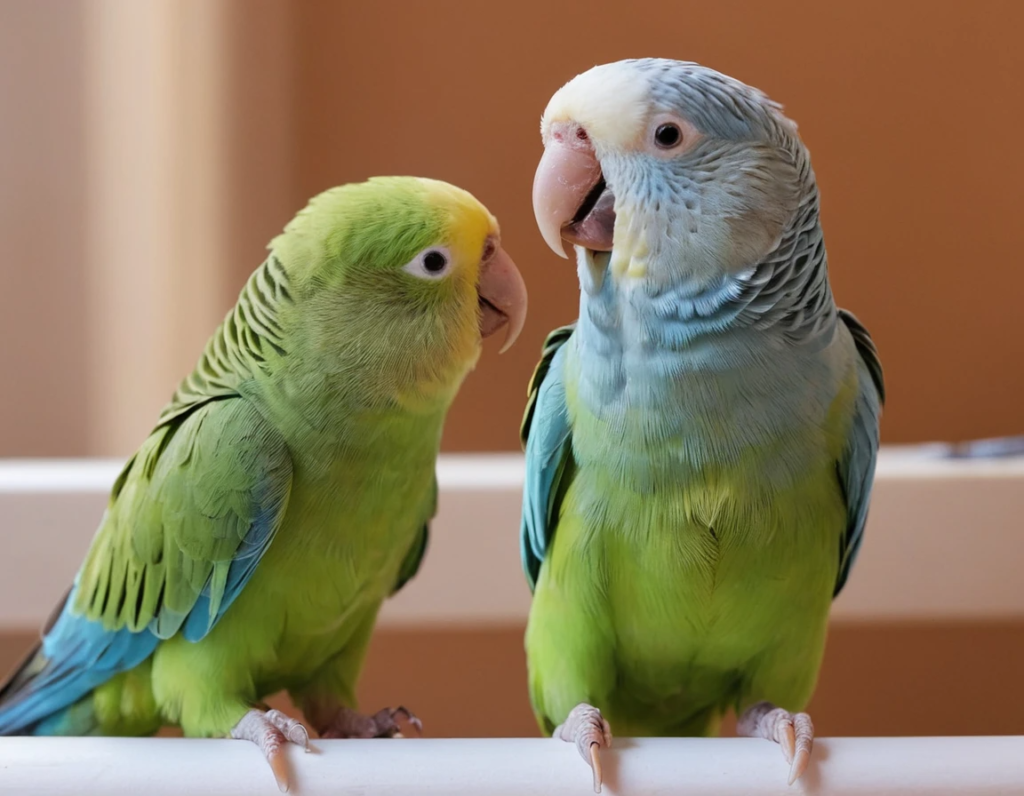
What to Do If a Parakeet’s Nail Bleeds After Trimming
So, you were in the middle of a parakeet nail trimming session, and—oops—you cut a little too close. Now there’s blood, and your tiny feathered friend is looking at you like you just committed the ultimate betrayal. Don’t panic! Here’s exactly what to do to stop the bleeding and keep your parakeet safe.
Step 1: Stay Calm (Even If Your Bird Isn’t)
First things first—don’t freak out. A bleeding nail might look scary, but it’s usually not life-threatening. Panicking will only stress your parakeet more, and they’ve already got plenty of opinions about what just happened.
Step 2: Apply Pressure
Gently hold a clean tissue or cotton ball against the bleeding nail. A little pressure can help slow the bleeding while you grab the next essential item.
Step 3: Use Styptic Powder or Cornstarch
If you have styptic powder (available at pet stores), dip the bleeding nail into it. If not, cornstarch or even flour can do the trick. Just press a small amount onto the nail to help clot the blood. (Your parakeet may give you the stink-eye for this, but it’s for their own good!)
Step 4: Keep Your Bird Still
Your parakeet will probably want to flap away dramatically at this point. Try wrapping them in a soft towel for a minute to keep them calm and prevent them from reopening the wound.
Step 5: Check If the Bleeding Stops
Most minor bleeding should stop within a few minutes. If it continues for more than 10 minutes, or your bird seems weak, contact a vet.
Step 6: Give Your Parakeet a Break (and a Treat)
Your parakeet is probably not happy with you right now. Offer a favorite treat and some gentle words to reassure them. This is also a good time to promise them you’ll be extra careful next time (even if they don’t believe you).
How to Avoid Bleeding in Future Parakeet Nail Trimming Sessions
- Trim only the tip of the nail to avoid cutting into the quick.
- Use a good light source to see the quick more clearly.
- Have styptic powder ready before you start.
- Consider filing instead of cutting if you’re nervous.
Final Thoughts
Accidentally cutting too close during parakeet nail trimming happens, even to experienced bird owners. The key is to stay calm, stop the bleeding quickly, and reassure your parakeet that you’re still their best friend (even if they don’t seem convinced right now).
Next time, take it slow, keep a close eye on the quick, and remember—your bird will forgive you… eventually!
How to Keep a Parakeet Calm During Nail Trimming
Trimming your parakeet’s nails is important, but let’s be honest—it’s not exactly their idea of a fun day. If you don’t want your tiny feathered friend turning into a flapping, squawking escape artist, you need to keep them as calm as possible. Here’s how to make parakeet nail trimming a little less dramatic (for both of you!).
Step 1: Pick the Right Time
Timing is everything. Try to trim your parakeet’s nails when they’re naturally more relaxed—like in the evening or after a play session. A tired bird is less likely to put up a fight (or launch an unexpected aerial attack on your face).
Step 2: Stay Calm Yourself
Parakeets are like tiny emotional mirrors—they sense your stress. If you’re nervous, they’ll be nervous. Take a deep breath, act like this is no big deal, and your bird might actually believe you.
Step 3: Introduce the Tools Early
Before jumping into parakeet nail trimming, let your bird see and hear the clippers. Place them near the cage for a day or two. Give your parakeet a chance to investigate, so they don’t see them as a mysterious (and terrifying) beak-snapping contraption.
Step 4: Use the Towel Burrito Method
Gently wrap your parakeet in a soft towel, leaving their head and feet exposed. This prevents excessive flapping and makes them feel secure—like a tiny, feathery burrito (but much less tasty).
Step 5: Talk Softly and Give Reassurance
Your bird might not understand every word, but the tone of your voice matters. Speak gently, hum, or even whisper sweet nothings like, “It’s okay, buddy, I promise I’m not trying to ruin your life.”
Step 6: Trim Quickly but Carefully
The faster you finish, the happier your parakeet will be. But don’t rush so much that you risk cutting too close to the quick. Trim just the tips, and if needed, file the nails down smoothly.
Step 7: Reward, Reward, Reward!
As soon as you’re done, shower your bird with their favorite treats, head scratches, and praise. This helps them associate parakeet nail trimming with something positive (or at least less terrible).
Bonus Tips for a Stress-Free Trim
- Use proper lighting to see the quick clearly and avoid mistakes.
- Try trimming with a partner—one holds the bird, the other trims.
- Keep sessions short so your bird doesn’t get overwhelmed.
- Do regular trims to prevent overgrown nails, making each session easier.
Final Thoughts
Keeping your parakeet calm during parakeet nail trimming is all about patience, gentle handling, and positive reinforcement. The more relaxed you are, the more likely they’ll tolerate the process (even if they give you the stink-eye afterward).
And remember—no matter how dramatic your parakeet gets, they’ll forgive you… eventually!
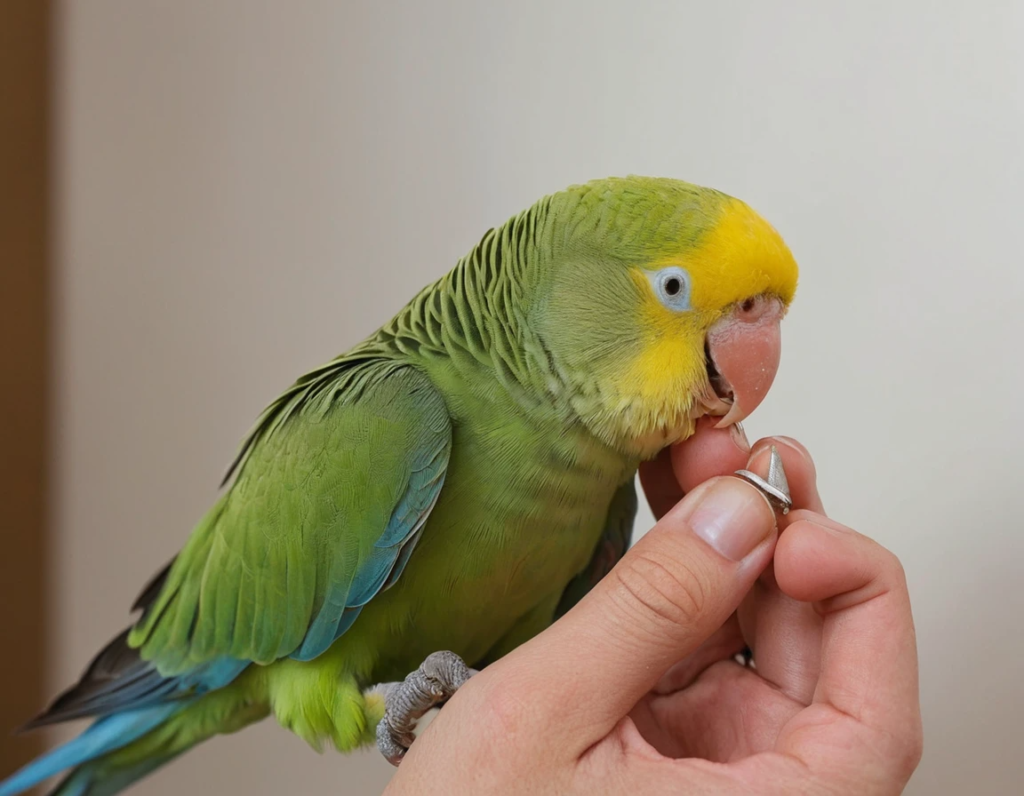
Natural Ways to Keep a Parakeet’s Nails Short
Let’s be real—parakeet nail trimming isn’t exactly your bird’s favorite activity (or yours). If your parakeet gives you the side-eye every time you pull out the clippers, you might be wondering if there’s a way to keep their nails in check naturally. Good news—there is! With the right setup, your bird can keep their nails short without you having to wrestle them into a tiny towel burrito.
Use the Right Perches
Not all perches are created equal! A simple way to keep your bird’s nails naturally filed down is to provide different types of perches. Here are the best options:
- Natural Wood Perches – Branches from bird-safe trees (like apple or willow) mimic what parakeets use in the wild and help wear down nails naturally.
- Sandy or Rough-textured Perches – These act like a gentle nail file as your parakeet moves around. (Just avoid the super rough ones that could hurt their feet.)
- Manzanita Perches – Harder than regular wood, these make your bird work a little harder to grip, helping wear down their nails over time.
Encourage Climbing and Activity
The more active your parakeet is, the more their nails will naturally wear down. Give them plenty of toys, ladders, and ropes to climb on. Bonus: A busy bird is a happy bird (and less likely to throw dramatic fits during parakeet nail trimming sessions).
Provide a Sandpaper Liner
Lining the bottom of the cage with a sandpaper sheet (made for birds) can help file down nails as your parakeet moves around. Just don’t go overboard—too much rough surface can irritate their feet.
Offer a Cuttlebone or Mineral Block
You might know cuttlebones as a good source of calcium, but did you know they can also help with parakeet nail trimming? Your bird will scratch and climb on it, naturally keeping their nails in check.
Let Them Walk on Different Surfaces
If your parakeet is tame, let them walk on different textures outside the cage. Carpet, rough fabric, or even your hand can help keep those nails from getting too long (and make them a little less dagger-like when they perch on you!).
Trim Only When Necessary
If you use these natural methods but still notice sharp claws, you might need to do a tiny trim every now and then. But with proper perches and activities, parakeet nail trimming can become a rare event instead of a regular struggle!
Final Thoughts
Keeping your parakeet’s nails short naturally is totally possible with the right cage setup and activities. The goal is to make sure their nails wear down over time, so you don’t have to play reluctant bird manicurist too often.
And remember—if all else fails, bribery (aka treats) is always an option if you do have to trim. Your parakeet may not love it, but at least they’ll forgive you faster!
Do Pet Stores or Vets Trim Parakeet Nails?
If the thought of trimming your parakeet’s nails sends you into a mild panic, you might be wondering—can someone else do it for me? The short answer: Yes! Many pet stores and vets offer parakeet nail trimming services, so you don’t have to risk a wrestling match with your tiny, feathered diva.
Do Pet Stores Trim Parakeet Nails?
Some pet stores (especially those with grooming services) will trim parakeet nails for a small fee. Places like Petco and PetSmart sometimes offer this service, but it’s best to call ahead since not every location does.
What to expect:
- A quick and simple trim (usually done by trained staff).
- A reasonable price, often around $5-$15.
- A less stressful experience—for you, at least! (Your parakeet, on the other hand, may still protest.)
Do Vets Trim Parakeet Nails?
Veterinarians, especially those who specialize in birds, are great for parakeet nail trimming. They have the experience to do it safely and can also check for any health concerns while they’re at it.
Why choose a vet?
- If your bird’s nails are overgrown or unusually thick, a vet can check for underlying issues.
- They have the right tools and a gentle approach.
- If you’re nervous about trimming nails yourself, a vet can show you how to do it properly.
Which Option is Best?
- Pet Store: Convenient, quick, and inexpensive.
- Vet: Best for first-timers, nervous bird parents, or if your bird’s nails are very overgrown.
- DIY: A good option if your parakeet trusts you (or at least tolerates you) and you want to save money.
Final Thoughts
Yes, both pet stores and vets offer parakeet nail trimming, so you don’t have to go it alone. Whether you go to a pro or try it yourself, the key is keeping those tiny talons in check—because let’s be honest, parakeet nails can feel like tiny daggers when they perch on you!
And if your bird holds a grudge afterward, a treat (or two) should smooth things over… eventually!
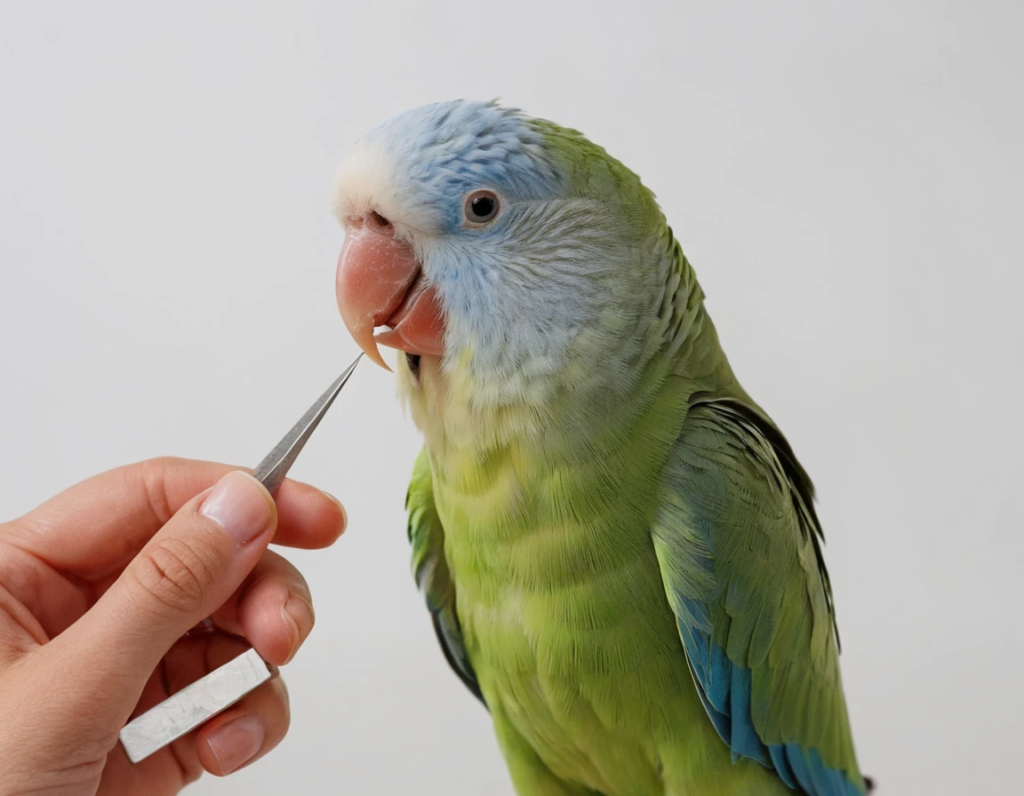
(FAQs) about parakeet nail trimming:
Here are 20 frequently asked questions (FAQs) about parakeet nail trimming to help you keep your feathered friend’s nails in check:
General Questions
Why do parakeets need their nails trimmed?
- Overgrown nails can make it hard for them to perch and might even cause injury.
How often should I trim my parakeet’s nails?
- Usually every 4 to 6 weeks, but it depends on how fast they grow.
Can I trim my parakeet’s nails at home?
- Yes, but only if you’re comfortable and have the right tools. Otherwise, a vet or pet store can help.
Do vets trim parakeet nails?
- Yes! Avian vets and some regular veterinarians offer this service.
Do pet stores trim parakeet nails?
- Some pet stores (like Petco and PetSmart) do, but always call ahead to check.
Tools & Techniques
What’s the best tool for trimming a parakeet’s nails?
- Small bird nail clippers or human nail clippers work well.
Can I use human nail clippers on my parakeet?
- Yes, but bird-specific clippers are often safer and easier to use.
Should I use a nail file instead of clippers?
- A nail file can help smooth rough edges after trimming but isn’t practical for full trims.
What happens if I cut too much of the nail?
- If you cut into the quick, the nail will bleed. Use styptic powder or cornstarch to stop it.
How do I avoid cutting the quick?
- Use a bright light to see the pinkish quick inside the nail and trim just the tip.
Parakeet Behavior & Comfort
1. How do I keep my parakeet calm during nail trimming?
- Wrap them in a soft towel and talk to them gently. Treats afterward help, too!
2. Why does my parakeet freak out when I try to trim their nails?
- They aren’t used to it and may feel trapped. Stay calm and move slowly.
3. Will trimming my parakeet’s nails hurt them?
- No, as long as you avoid cutting into the quick.
4. Do parakeets hold grudges after nail trimming?
- They might give you the stink-eye for a while, but treats and sweet talk will win them back.
Preventing Overgrown Nails
1. Are there natural ways to keep parakeet nails short?
- Yes! Use rough-textured perches, ladders, and plenty of activity to wear them down naturally.
2. Do sand perches really help with nail trimming?
- They can, but too much rough texture can irritate their feet. Use them in moderation.
3. What happens if I never trim my parakeet’s nails?
- They can get too long, making perching difficult and even causing injury.
Emergency & Aftercare
1. What do I do if my parakeet’s nail starts bleeding?
- Apply styptic powder, cornstarch, or flour and apply gentle pressure.
2. Can I use super glue if my parakeet’s nail won’t stop bleeding?
- NO! Never use super glue. If the bleeding won’t stop, take your bird to a vet.
3. How do I know if my parakeet’s nails are too long?
- If their nails curve excessively, get caught on fabric, or make perching difficult, it’s time for a trim.

